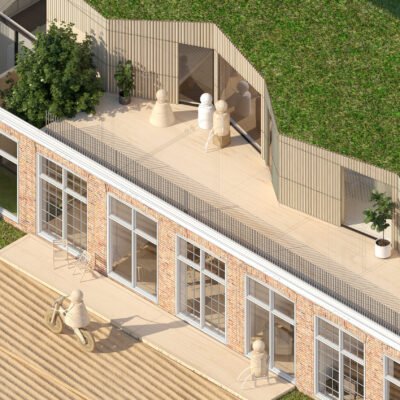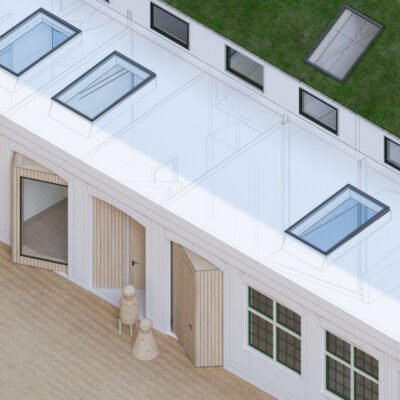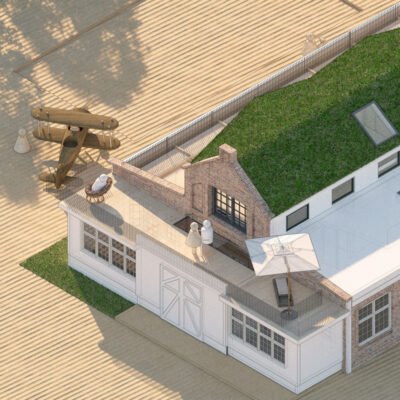HEMBRUG A7
Large
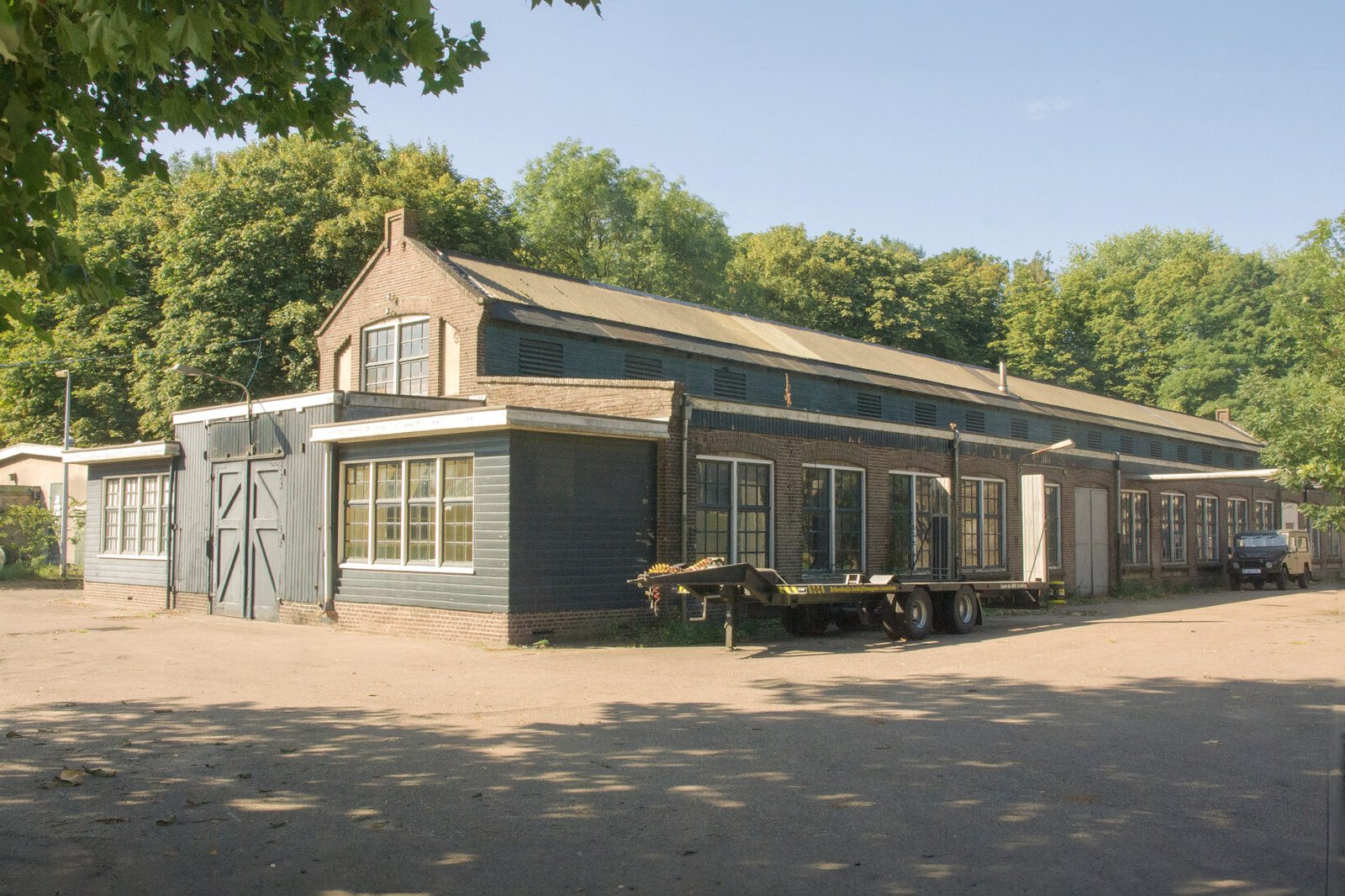
Building A7, a 1916 monument situated on a cultural heritage site, posed a unique challenge in balancing heritage preservation with modern architectural interventions. Located in the Hembrugterrein, just north of Amsterdam, this former military car workshop has been thoughtfully transformed into a residential space for six distinct families, blending history with contemporary living.
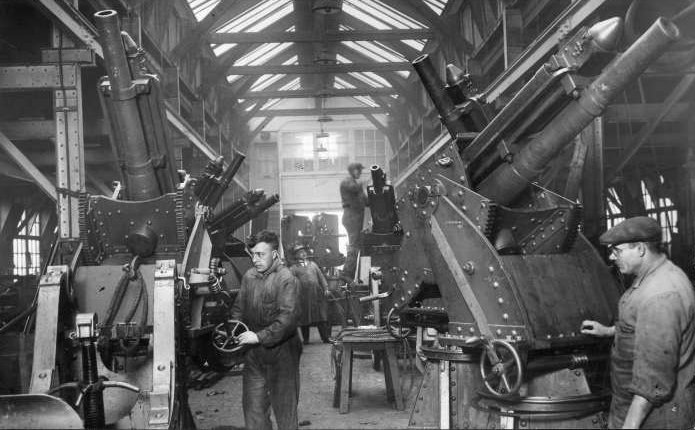
The Hembrugterrein has a rich history, serving as the site where the Artillerie Inrichtingen produced firearms, artillery, and ammunition for the Dutch army from 1895 onwards. After the outbreak of World War I, it became a bustling workplace for 8,500 people, only to face near destruction during World War II. In the years that followed, nature reclaimed the abandoned area, and the buildings fell into disrepair. Except for a few creative entrepreneurs who found temporary refuge there, the site remained closed off from the outside world for many years.
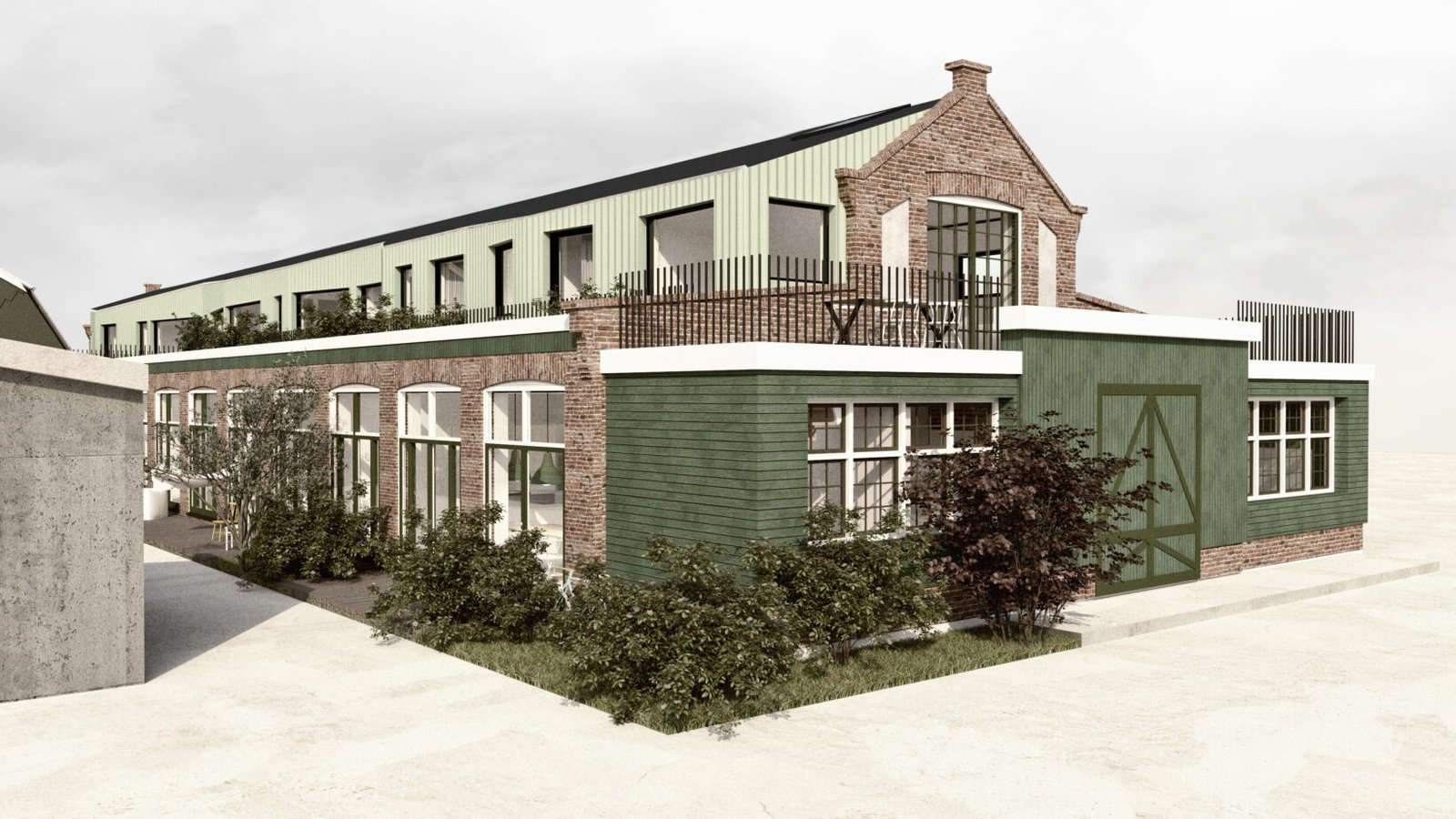
The initiative for the transformation of building A7 was entirely with the eventual residents. Moving away from the classical top-down approach, the clients took matters into their own hands and purchased the building as a group. LOOF used this approach as inspiration for the design process of the building. We embraced an inclusive and participatory design process involving the group in the decision-making process. Collaborative discussions and continuous feedback from the families ensured that their aspirations and desires were at the core of the design. This community driven design led to an evolving architectural narrative that resonated with the inhabitants.
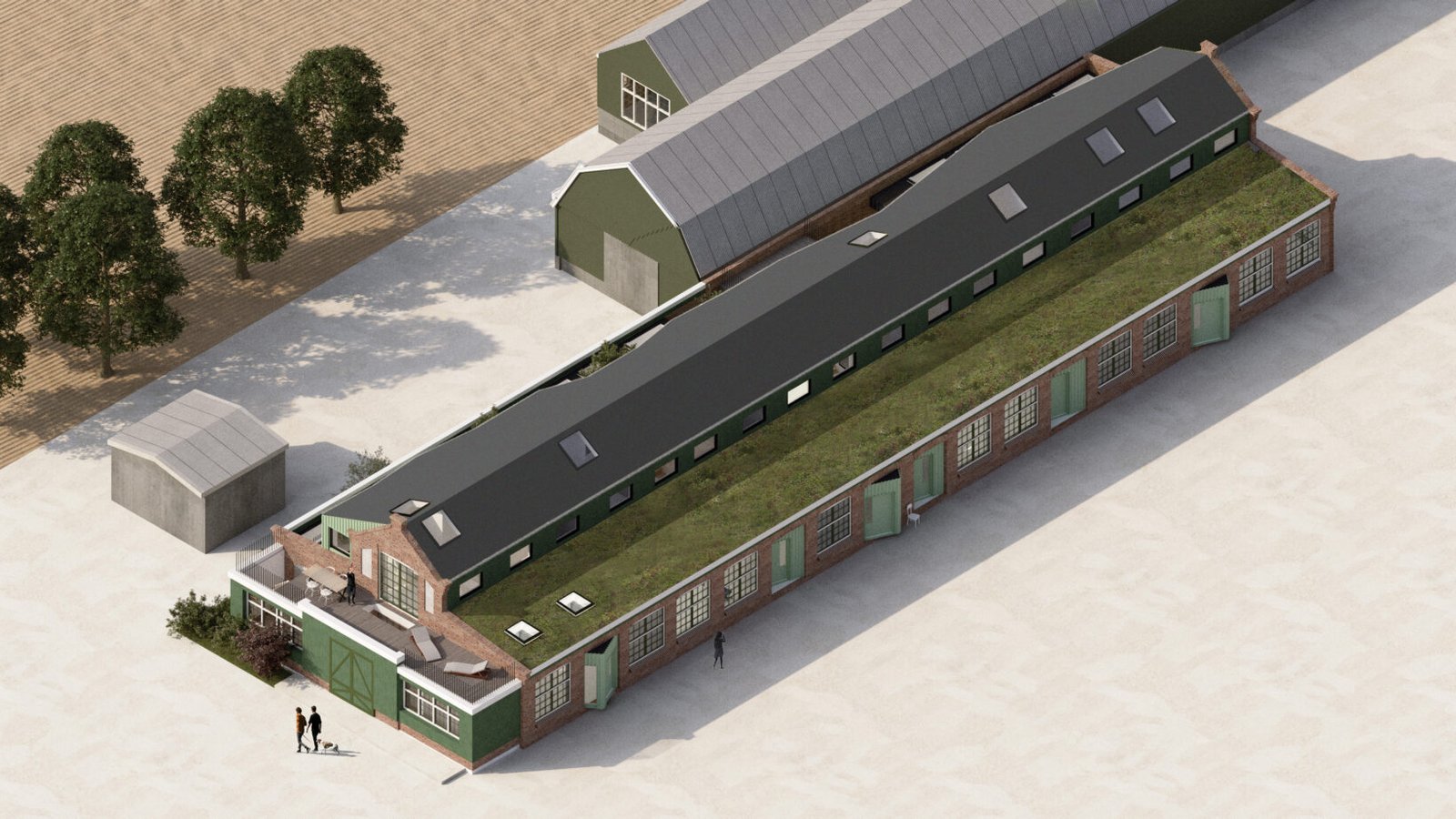
A key challenge in transforming Building A7 was balancing its collective identity with the individuality of the six homes it now houses. Each family had distinct needs, resulting in six unique homes ranging from 100 m² to 200 m². The design integrates these diverse living spaces while preserving the building's monumental character, achieving a harmonious blend of individuality and heritage. The most important intervention is the fully flexible, insulating wooden inner shell, which spans the entire width of each home without structural supports. This allows the interiors to be customized according to personal preferences. Additionally, a mezzanine floor in the central, high-ceilinged area of the building provides each home with an extra living space.
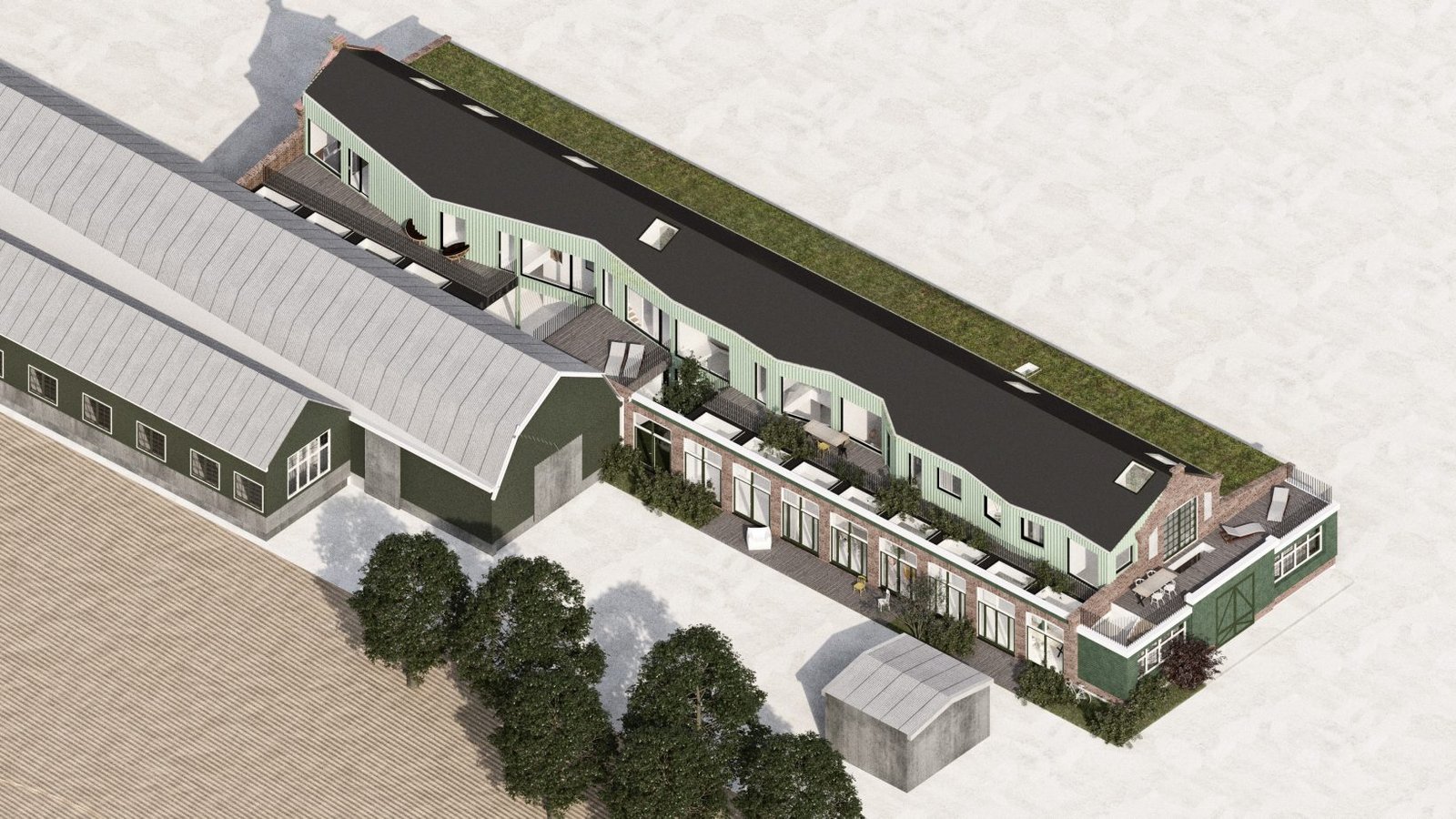
On the upper floor of the south facade, a zigzag volume adapts to each home's unique spatial needs, extending outward for additional bedrooms or bending inward for a smaller upper floor. Large window openings, connected to voids directly behind them, draw natural light deep into the interiors. In areas adjacent to the neighboring building, these voids are designed as patios, bringing ample light to the ground floor and providing direct access to private inner gardens.
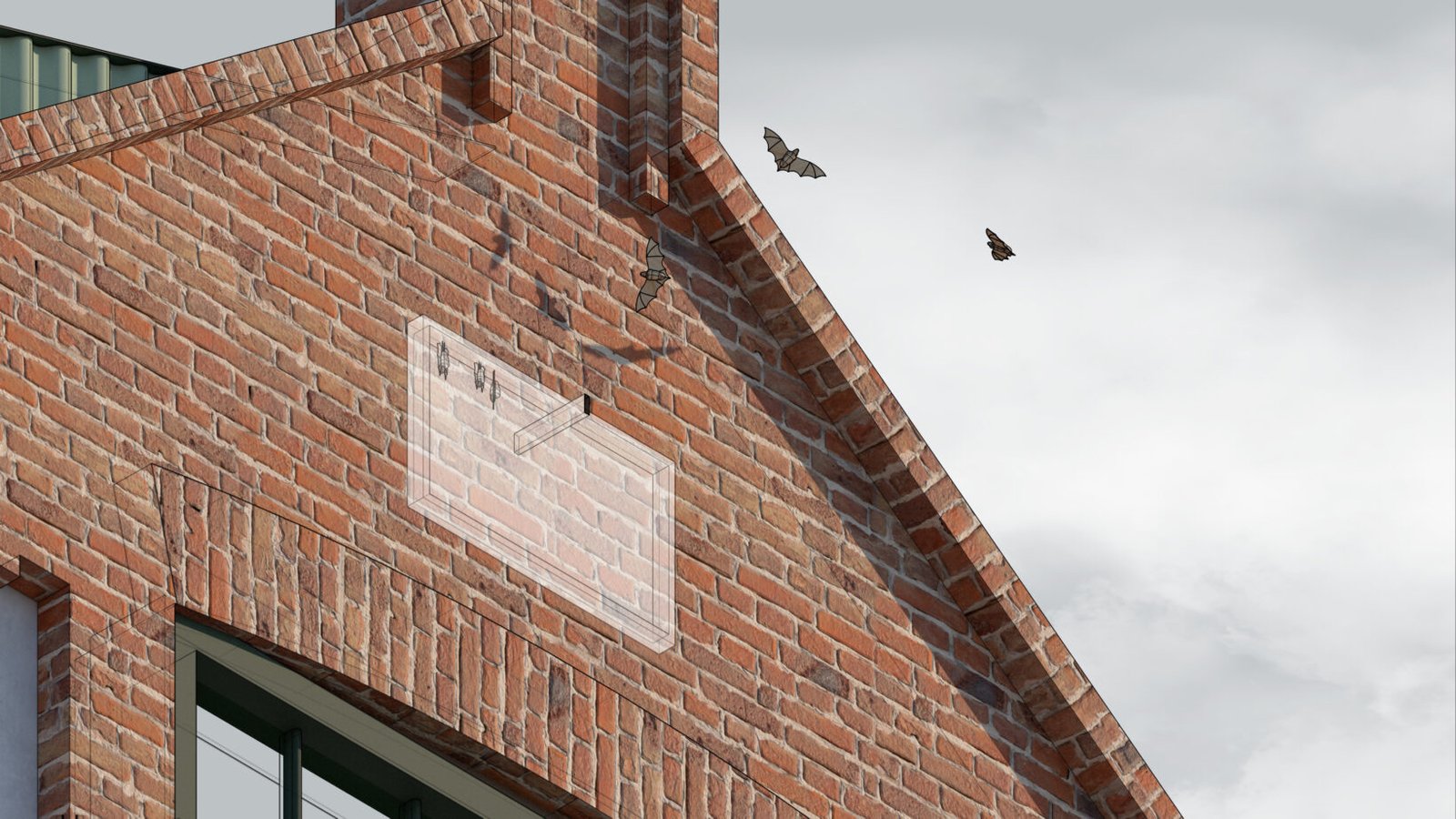
Before its transformation, Building A7 was already home to permanent residents: the common pipistrelle and Nathusius's pipistrelle bats, who used the building as a winter refuge. To maintain their habitat, specially designed roosts were integrated high up in the gable, concealed behind the brickwork. These roosts are placed against the warm insulation of the homes and are accessible through discreet open joints in the masonry, allowing the bats to coexist with the building's new residential function.
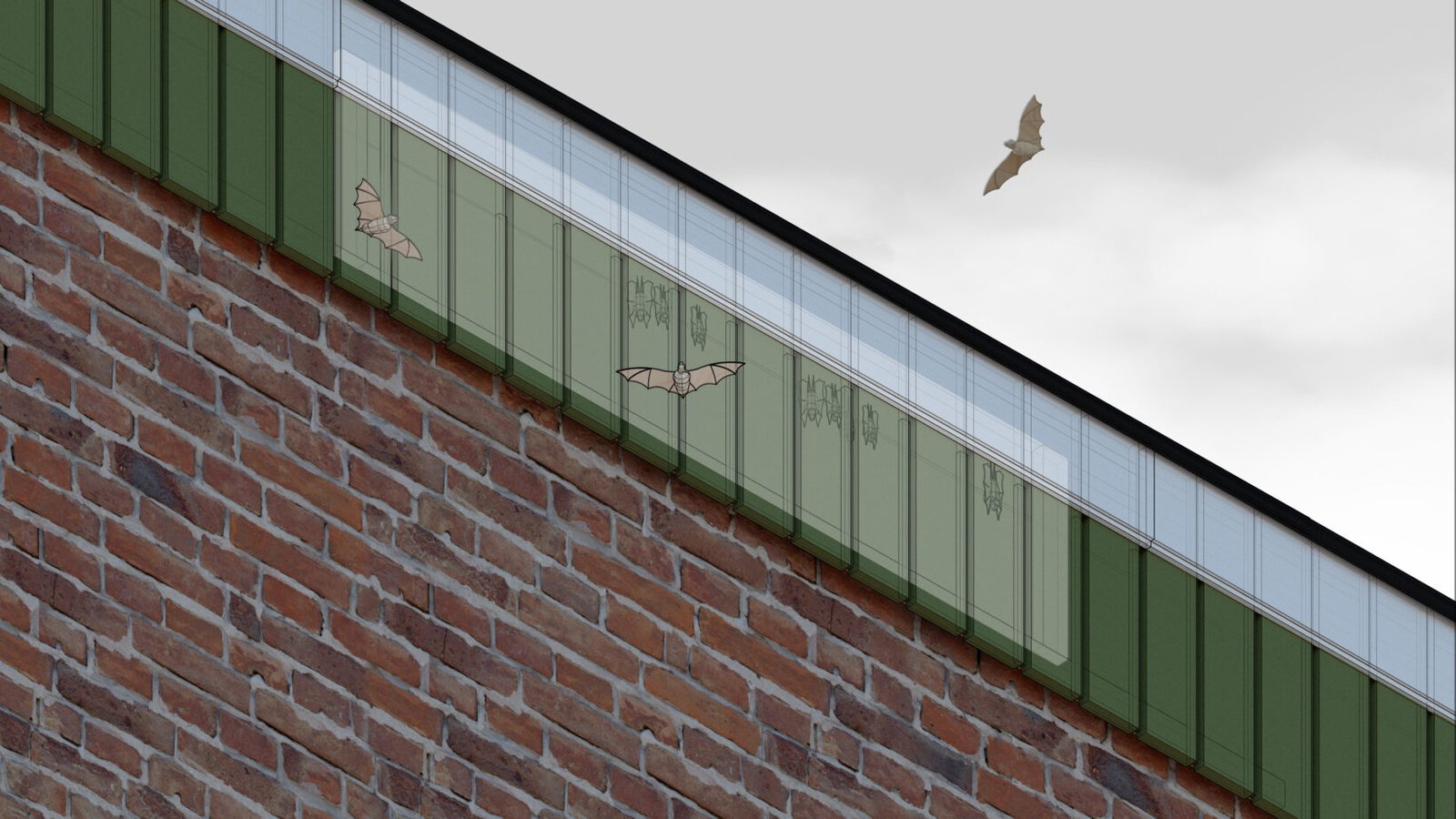
The longitudinal facades feature open roosts integrated under the eaves, allowing bats to easily fly in from below. These provide accessible roosting areas in addition to the more sheltered roosts higher up in the gable.
